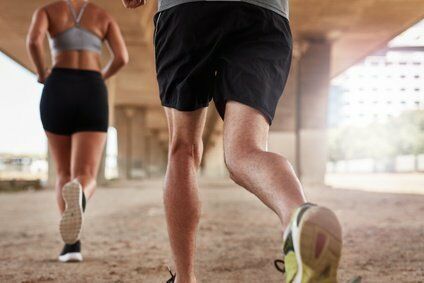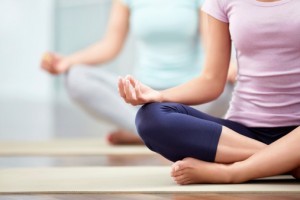
Do you exercise on a regular basis? Have you noticed varicose or spider veins in your legs? If you have, you most likely have questions about exercise and varicose veins, like if it’s safe to exercise if you have varicose or spider veins? If so, what exercises are best for slowing the progression of venous reflux – the underlying cause of your vein disease? Or, you are wondering how could you possibly have vein disease when you are an athlete?
Today, we will answer these questions and provide helpful tips about exercising and varicose veins that promote ‘healthy veins for life.’ Plus, we will discuss other solutions if you have a difficult time exercising for various reasons.
One example may be: a young woman in great shape, a life-long basketball player and a runner with symptomatic vein disease. The truth is, even athletes and healthy people can have varicose and spider veins. In fact, some exercises can increase your risks of having varicose veins or other vein diseases.
Diseased veins are most commonly associated with prolonged sitting or standing careers, hereditary factors, and pregnancy. However, even if you are at high risk for vein disease, there are principles you can follow to help maintain healthy veins.
Exercise is the #1 healthy vein principle, but certain exercises are better for your veins than others. As you exercise, blood is pumped back to the heart from the calf muscle and veins in the arch of the foot – a strong calf muscle promotes healthy blood circulation and minimizes vein disease.
Set a goal to exercise 30 minutes a day, at least five days a week. If you do not exercise now, start slow and build up from there. Your veins will thank you for it!
The Do’s

Walking is a low-impact activity that stretches and strengthens your calf pump, thereby improving your blood flow. Other low-impact exercises like riding a stationary bike, using the elliptical or swimming are great for exercising the calf muscle and improving calf pump blood flow without placing stress on your joints and bones.
The Don’ts

Running or jogging is a fantastic aerobic exercise that gets the calf muscles and feet moving, but it may adverse effects on the veins. Any exercise that causes you to strain or has a repetitive pounding on the ground can cause damage to the valves in the vein without you knowing it.
Other Strenuous Activities With Minimal Aerobics
Other activities can worsen venous reflux. We encourage avoiding these activities or performing them in very short segments combined with aerobic activity.
When Exercise Isn’t An Option
We understand that there are circumstances that make frequent exercise impossible. There are other measures, which promote healthy veins for life.
Pump your calf while sitting – While sitting or standing, rock your feet back and forth on the ground from heel to toe activating the calf pump.
Wear graduated compression hose especially while traveling, sitting or standing for an extended period, and during pregnancy.
Avoid high heels except for special occasions.
Maintaining a healthy lifestyle with exercise and good nutrition is important for healthy veins. Schedule a healthy legs free screening or call us at 240-965-3915 if you would like to discuss your vein health.